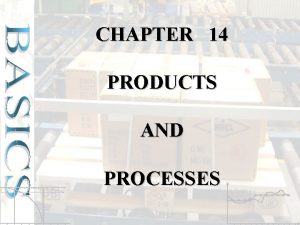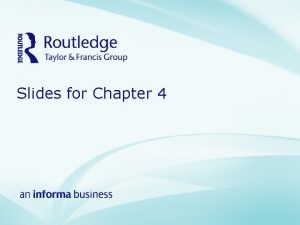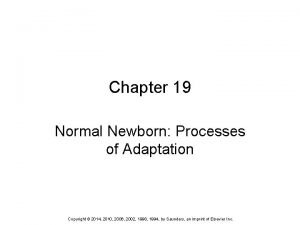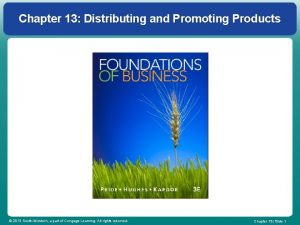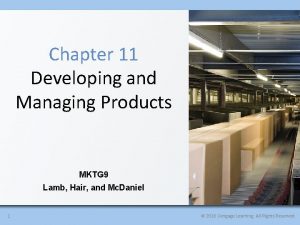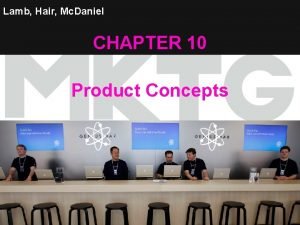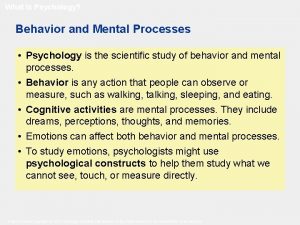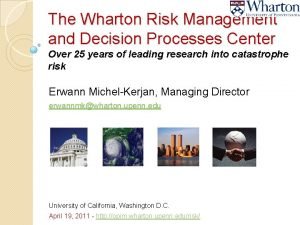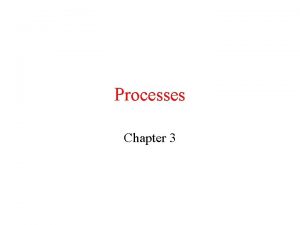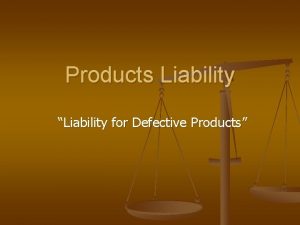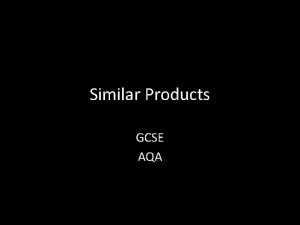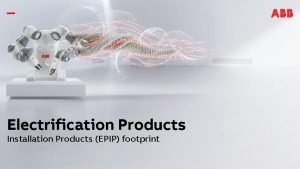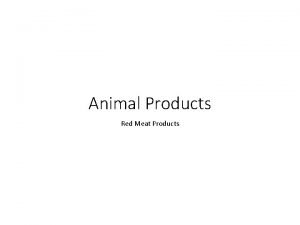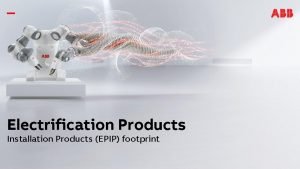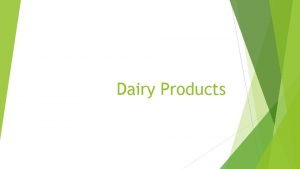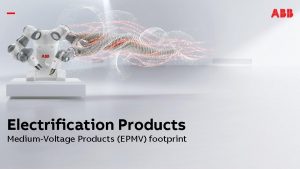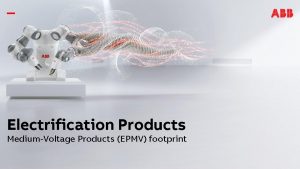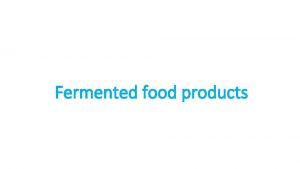CHAPTER 14 PRODUCTS AND PROCESSES PRODUCTS AND PROCESSES











- Slides: 11

CHAPTER 14 PRODUCTS AND PROCESSES

PRODUCTS AND PROCESSES A product passes through several stages, known as the product life cycle, beginning with its introduction and ending with its disappearance from the marketplace. NEED FOR NEW PRODUCTS Introduction phase : This phase is most expensive and risky stage. To get customer acceptance of the product the firm will usually spend heavily on adversiting and sales promotion. Growth Phase : In this phase, of a successful product increase at a rapid rate. Production increases and the unit cost of the product drops. Maturity Phase : Nearly everyone interested in the product has sampled or ows the product and sales begin to level off. The market is satured Decline Phase : Off as customers begin to lose in the product or to buy improved versions from competitors. As profits decline still further, companies will look ways to maintain profitability. Generally, there are three ways in which this can be done : INTRODUCE NEW PRODUCTS IMPROVE EXISTING PRODUCTS IMPROVE THE METHODS OF PRODUCTION

INTRODUCE NEW PRODUCTS Somehow the needs of sales and the economics of production must be balanced. Usually this balance can be obtained with good programs of simplification, standardization and specialization Product. Sales Organizations want to offer product variety to customers. Often this means the organization must offer a variety of products, many of which sell in small volumes. OPERATIONS would like to produce as few products as possible and make them in longs runs. They would fulfill their mandate to produce at the lowest cost.

to 1) Simplification The emphasis is not cutting out products simply to reduce variety, but remove unnecessary products and variations 2) Standardization is the way parts fit together. If the designs of assemblies are standardized so various models or products are assembled in the same way, the mass production is possible. 3) Specialization In product specialization, a firm may produce and market only one or a limited range of similar products. This leads to prcess and labor specialization, which increases productivity and decreases costs. a) Product and Market Focus Can be based on characteristics such as customer grouping (serving similar customers), Demand characteritics (volume), Degree of customization b) Process Focus Is based on the similarity of process c) Focused Factory An area in an existing factory set aside to specialize in a narrow product mix. Repetition and concentration in one area allows the workforce and management to gain advantages of specialization.

PRODUCT DESIGN 1) Functional The product will be designed to perform as specified in the marketplace 2) Low-cost Processing The product must be designed so it can be made at least cost. 3) Simultaneous Engineering To design products for low-cost manufacture require close coordination between product design and process design, which is called silmutaneous engineering. If the two groups can work together, they have a better chance of designing a product that will function well in the marketplace and can be manufactured at least cost. Advantages to this appraoch : - Time to market is reduced. The organization that gets its products to market before the competition gains a strong competitive advantage. - Cost is reduced. Involving all stakeholders early in the process means less need for costly design changes later.

PROCESS DESIGN Operations management is responsible for producing the products and services the customer wants, when wanted, with the required quality, at minimum cost and maximum effectiveness and fprodictivity. Five basic factors must be considered when designing a process : - Product design and quality level, the product’s design determines the basic processes needed to convert the raw materials and components into the finished product. The process designer must be aware of capabilities of machines and processes and select those that will meet the quality level at least cost. - Demand Patterns and flexibility needed. If there is variation in demand for a product, the processus must be flexible enough to respond to these changes quickly. Flexible processes require flexible equipment and personnel capable of doing a number of different jobs. - Quantity/capacity considerations. Product design, the quantity to produce and process design are closely related. Both product and process design depend on the quantity needed.

PROCESSING EQUIPMENT General-Purpose machinery can be used for a variety of operations or can do work on a variety of products within its machine classification. Special-Purpose Machinery is designed to perform specific operations on one work piece or a small number of similar work pieces. Special-purpose machinery is less flexible but can produce parts much quicker than general-purpose machinery.

PROCESS SYSTEMS Flow Processes, Worstations needed to make the product, or family of similar products, are grouped together in one department, and are laid out in the sequence needed to make the product. If sufficient demand exists, flow systems are extremely efficient because : - Workstations are designed to produce a limited range of similar products, so machinery and tooling can be specialized. - Because material flows from one workstation tothe next, there is very little build-up of work-in-process inventory - Because of the flow system and the low work-in-process inventory, led times are short - In most cases, flow systems substitute capital for labor and standardize what labor there is into routine tasks. - Because it is so cost-effective, this sytem of processing should be used wherever and to whatever extent it can be. Intermittent Processes, In intermittent manufacturing goods are not made continuously as in flow system but are made at intervals in lots batches, Workstations must be capable of processing many different parts. Thus it is necessary to use general-purpose workstations and machinery that can perform a variety of tasks. Project Processes, Project manufacturing is mostly used for large complex projects such as locomotives, ships, or buildings. He has little advantage except it avoids the very high costs of moving the product from one workstation to another.

SELECTING THE PROCESS (COSTING PROCESS) Fixed Costs, Costs that do not vary with the volume being produced. Purchase costs of machinery and tools and setup costs are considered fixed cost. Variable Costs, Costs that vary with the quantity produced. Direct labor and direct material are the major variable costs. Example : Run time for a produce is 12 minutes per unit The labor cost 15 euros per hour The material cost 5 euros per unit Variable cost is ((12*15)/60) + 5 = 8 euros per unit And Total Cost is : Fixed Cost + (Variable Cost * number of units produced) Then TC = FC + VCx If Method A FCa = 2000 euros VCa = 3 euros per unit CTa = 2. 000+(3 x) Unit Cost = (2. 000+(3 x))/x Method B FCb = 20. 000 euros VCb = 1 euro per unit CTb = 20. 000+(1 x) Ucb = (20. 000+(1 x))/x

SELECTING THE PROCESS (COSTING PROCESS) Cost Equalization Point, Knowing the quantity beyond which the cost of using method B becomes less than for method A enables us to decide easily which process to use minimize the total cost (and the unit cost) This quantity is called the Cost Equalization Point and is the volume for which the total cost of using one method is the same as another. TCa = TCb FCa + VCax = FCb + VCbx 2. 000 + 3 x = 20. 000 + 1 x 3 x – 1 x = 20. 000 - 2. 000 2 x = 18. 000 x = 9. 000 units The CEP is 9. 000 units. At this quantity the total cost of using method A will be the same as for method B. If the volume < 9. 000 units, method A is the best. If the volume > 9. 000 units, method B is the best.

CONTINUOUS PROCESS IMPROVEMENT Continuous Process Improvement is a low-cost method of designing or improving works methods to maximize productivity. The Six Steps in Continuous Process Improvement : useful 1 – Select the process to be studied 2 – Record the existing method to collect the necessary data in a form 3 – Analyze the recorded data to generate alternative improved methods 4 – Evaluate the alternatives to develop the best method of doing the work 5 – Install the method as standard practice by training the operator. 6 – Maintain the new method
 Concurrent in os
Concurrent in os Products and processes
Products and processes Systematic innovation examples
Systematic innovation examples Functional vs innovative products examples
Functional vs innovative products examples Coke vs pepsi sales
Coke vs pepsi sales Designing and managing service processes
Designing and managing service processes Chapter 19 normal newborn processes of adaptation
Chapter 19 normal newborn processes of adaptation Chapter 13 distributing and promoting products
Chapter 13 distributing and promoting products Developing and managing products
Developing and managing products Daniel chapter one products
Daniel chapter one products Study of behavior and mental processes
Study of behavior and mental processes Wharton risk management
Wharton risk management

